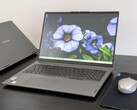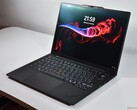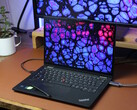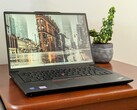Verdict — Inexpensive Convertible With Snapdragon And OLED
Much like the flagship Snapdragon X Elite series, the budget-oriented Snapdragon X Plus series offers both incredible battery life with minimal fan noise especially when compared to the usual Intel or AMD options. Performance-per-watt can be exceptional assuming your day-to-day Windows applications are optimized for the ARM hardware. The 2-in-1 form factor and standard OLED touchscreen help to expand the versatility and visual experience, respectively.
Unfortunately for Qualcomm, the $800 range is crowded with midrange alternatives from Intel and AMD such as the HP Pavilion x360 14 or Dell Inspiron 14 7435 2-in-1 which can offer more predictable and oftentimes faster performance than our Snapdragon X Plus even at the Ryzen 5 or Core 5 level. It's true that battery life and fan noise may not be up to par with the Qualcomm-based IdeaPad 2-in-1 14, but they're still very good nonetheless and arguably worth the tradeoff for the native x86 environment and generally faster CPU and integrated GPU. There is still very little reason to choose the Qualcomm-based IdeaPad over the traditional AMD or Intel-based IdeaPad 2-in-1 14 for the same price point when the vast majority of applications continue to run on ARM emulation.
Pros
Cons
Price and Availability
The IdeaPad 5 2-in-1 14Q8X9 is now shipping on Amazon for $800 USD as reviewed. Buyers can also purchase directly from the manufacturer for the same starting price.
Potential Competitors in Comparison
Image | Model / Review | Price | Weight | Height | Display |
|---|---|---|---|---|---|
| Lenovo IdeaPad 5 2-in-1 14Q8X9 Qualcomm Snapdragon X Plus X1P-42-100 ⎘ Qualcomm SD X Adreno X1-45 1.7 TFLOPS ⎘ 16 GB Memory, 1024 GB SSD | Amazon: $829.00 List Price: 800 USD | 1.5 kg | 17.5 mm | 14.00" 1920x1200 162 PPI OLED | |
| Lenovo ThinkPad T14s Gen 6 21M2S00G00 AMD Ryzen AI 7 PRO 360 ⎘ AMD Radeon 880M ⎘ 32 GB Memory, 1024 GB SSD | Amazon: 1. $1,299.99 Lenovo ThinkPad T14 Gen 6 La... 2. $1,149.99 Lenovo ThinkPad T14 Gen 6 Bu... 3. $2,599.00 Lenovo ThinkPad T14s Gen 6 1... List Price: 1500 Euro | 1.3 kg | 19.2 mm | 14.00" 1920x1200 162 PPI IPS LED | |
| Lenovo IdeaPad 5 2-in-1 14AHP9 AMD Ryzen 7 8845HS ⎘ AMD Radeon 780M ⎘ 16 GB Memory | Amazon: List Price: 820 USD | 1.6 kg | 17.9 mm | 14.00" 1920x1200 162 PPI IPS | |
| HP OmniBook X 14 Qualcomm Snapdragon X Elite X1E-78-100 ⎘ Qualcomm SD X Adreno X1-85 3.8 TFLOPS ⎘ 16 GB Memory, 1024 GB SSD | Amazon: 1. $449.99 HP OmniBook 5 14 inch Next G... 2. $899.00 HP OmniBook X Flip 2-in-1 La... 3. $669.99 HP OmniBook X Flip 14 2-in-1... List Price: 1299€ | 1.3 kg | 14.3 mm | 14.00" 2240x1400 189 PPI IPS | |
| Apple MacBook Pro 14 2024 M4 Apple M4 (10 cores) ⎘ Apple M4 10-core GPU ⎘ 16 GB Memory, 512 GB SSD | Amazon: $1,749.00 List Price: 1899€ | 1.5 kg | 15.5 mm | 14.20" 3024x1964 254 PPI MiniLED | |
| Samsung Galaxy Book4 Edge 14 Qualcomm Snapdragon X Elite X1E-80-100 ⎘ Qualcomm SD X Adreno X1-85 3.8 TFLOPS ⎘ 16 GB Memory | Amazon: $649.99 List Price: 1569€ | 1.2 kg | 10.9 mm | 14.00" 2880x1800 243 PPI OLED |
The IdeaPad 5 2-in-1 14Q8X9 (or IdeaPad 5x 2-in-1 in some markets) is the Snapdragon version of the existing IdeaPad 5 2-in-1 14 design. Thus, the IdeaPad 5 2-in-1 14 is currently one of the very few models with processor options from all three major chipmakers (Intel, AMD, and Qualcomm). We recommend checking out our reviews on the Intel and AMD versions as they all share many similar physical features.
Our review unit ships with the Snapdragon X Plus X1P-42-100 SoC with integrated Adreno graphics, 16 GB of RAM, and 1200p OLED touchscreen for under $800. There are no other CPU or display options to select from at the moment.
Competitors in this space include other budget 14-inch convertibles like the Asus VivoBook Flip 14, Dell Inspiron 14 2-in-1, or HP Pavilion x360 14. The pricier Yoga Slim 7 14Q8X9 clamshell can be considered as the higher-end version of the IdeaPad 5 2-in-1 14Q8X9.
More Lenovo reviews:
Specifications
Case
The chassis consists of anodized aluminum for the outer lid and cheaper PC-ABS plastic for the base portion which is a common practice to save on costs. The matte gray monotone color gives the appearance that only one material is used throughout, but the difference in quality becomes apparent when touching the surfaces.
Chassis rigidity is otherwise reasonably firm for the price including the 360-degree hinges.
Dimensions are identical to the Intel or AMD versions of the same model and so the weight remains almost the same as well. Users hoping for a noticeably lighter machine due to the more efficient ARM CPU may be disappointed.
Connectivity
Port options are identical to the Intel and AMD versions of the IdeaPad 5 2-in-1 14 albeit without support for Thunderbolt devices such as eGPUs. We nonetheless still appreciate the variety of available ports without needing to rely on cumbersome adapters.
SD Card Reader
Card reader performance is slow but otherwise average for a budget 14-inch system. Transferring 1 GB of pictures from our UHS-II test card to desktop takes about 22 seconds compared to well under 10 seconds on the XPS 13.
| SD Card Reader | |
| average JPG Copy Test (av. of 3 runs) | |
| Dell XPS 13 9310 OLED (AV PRO microSD 128 GB V60) | |
| Lenovo IdeaPad 5 2-in-1 14Q8X9 (AV Pro V60) | |
| Samsung Galaxy Book4 Edge 14 | |
| Lenovo IdeaPad 5 2-in-1 14AHP9 (AV Pro V60) | |
| maximum AS SSD Seq Read Test (1GB) | |
| Dell XPS 13 9310 OLED (AV PRO microSD 128 GB V60) | |
| Samsung Galaxy Book4 Edge 14 | |
| Lenovo IdeaPad 5 2-in-1 14Q8X9 (AV Pro V60) | |
| Lenovo IdeaPad 5 2-in-1 14AHP9 (AV Pro V60) | |
Communication
| Networking | |
| iperf3 transmit AXE11000 | |
| Samsung Galaxy Book4 Edge 14 | |
| HP OmniBook X 14 | |
| Lenovo ThinkPad T14s Gen 6 21M2S00G00 | |
| Lenovo IdeaPad 5 2-in-1 14Q8X9 | |
| Lenovo IdeaPad 5 2-in-1 14AHP9 | |
| iperf3 receive AXE11000 | |
| Lenovo ThinkPad T14s Gen 6 21M2S00G00 | |
| Samsung Galaxy Book4 Edge 14 | |
| HP OmniBook X 14 | |
| Lenovo IdeaPad 5 2-in-1 14Q8X9 | |
| Lenovo IdeaPad 5 2-in-1 14AHP9 | |
| iperf3 transmit AXE11000 6GHz | |
| Samsung Galaxy Book4 Edge 14 | |
| Lenovo IdeaPad 5 2-in-1 14Q8X9 | |
| Lenovo ThinkPad T14s Gen 6 21M2S00G00 | |
| iperf3 receive AXE11000 6GHz | |
| Lenovo ThinkPad T14s Gen 6 21M2S00G00 | |
| Samsung Galaxy Book4 Edge 14 | |
| Lenovo IdeaPad 5 2-in-1 14Q8X9 | |
Webcam
A 2 MP webcam comes standard alongside a physical privacy shutter. IR is not supported likely to save on costs.
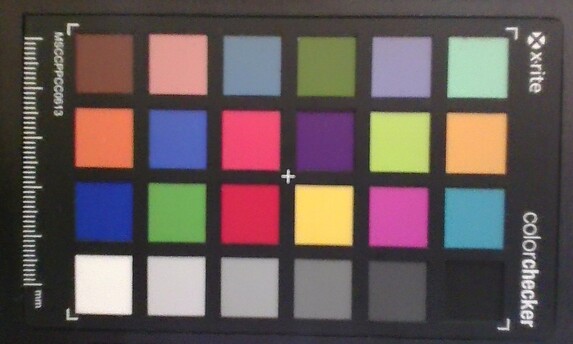
Maintenance
The bottom panel is secured by just four T5 Torx screws for very easy servicing. Unfortunately, there's not much to upgrade once inside as the RAM modules are soldered and there is no support for secondary SSDs. The WLAN module is also soldered unlike on the Intel or AMD versions of the IdeaPad 5 2-in-1 14.
Sustainability
The model has Energy Star 8.0, EPEAT Gold, and RoHS certifications. However, Lenovo does not list any use of recycled materials during manufacturing.
Accessories And Warranty
There are no extras in the box other than the AC adapter and paperwork. The usual one-year limited manufacturer warranty applies if purchased in the US.
Input Devices
Keyboard And Touchpad
Lenovo has made no changes to the keyboard or clickpad on this particular IdeaPad 5 2-in-1 14 design since its debut in 2022. Key feedback continues to be on the weaker side especially for the Space and Enter keys which are usually firmer and more satisfying on most other laptops. Users accustomed to the superior keyboards on most ThinkPad or HP Elite models may find the IdeaPad 5 2-in-1 14 to be a downgrade in this respect.
Meanwhile, the spacious (12 x 7.5 cm vs. 10.5 x 7 cm) clickpad also suffers from a somewhat soft and spongy feedback despite the relatively loud clatter.
Display
It's nice seeing OLED come standard on such an inexpensive convertible. Unfortunately, looking closer at the specifications reveals that this particular panel is missing a lot of features that most modern OLED panels offer. Firstly, our panel is limited to a refresh rate of only 60 Hz instead of the more desirable 90 Hz or 120 Hz. Secondly, native resolution is only 1200p which, while acceptable considering the 14-inch screen size, isn't nearly as sharp as many other 14-inch models like the Galaxy Book4 Edge 14. And lastly, brightness isn't high enough to support HDR features. These key drawbacks are indicative of a budget OLED panel. Of course, owners can still benefit from innate OLED advantages over IPS such as minimal ghosting and more vibrant P3 colors.
| |||||||||||||||||||||||||
Brightness Distribution: 97 %
Center on Battery: 357.6 cd/m²
Contrast: ∞:1 (Black: 0 cd/m²)
ΔE ColorChecker Calman: 4.51 | ∀{0.5-29.43 Ø4.78}
ΔE Greyscale Calman: 1.6 | ∀{0.09-98 Ø5}
Gamma: 2.24
CCT: 6278 K
| Lenovo IdeaPad 5 2-in-1 14Q8X9 Samsung ATNA40CT01-0, OLED, 1920x1200, 14", 60 Hz | Lenovo ThinkPad T14s Gen 6 21M2S00G00 MNE007JA1-2 , IPS LED, 1920x1200, 14", 60 Hz | Lenovo IdeaPad 5 2-in-1 14AHP9 LEN140WUM, IPS, 1920x1200, 14", 60 Hz | HP OmniBook X 14 BOE0C93, IPS, 2240x1400, 14", 60 Hz | Apple MacBook Pro 14 2024 M4 Pro Entry MiniLED, 3024x1964, 14.2", 120 Hz | Samsung Galaxy Book4 Edge 14 ATNA40CU07-0, OLED, 2880x1800, 14", 120 Hz | |
|---|---|---|---|---|---|---|
| Display | ||||||
| Display P3 Coverage (%) | 69.6 | 39.6 | 78.9 | 97 | ||
| sRGB Coverage (%) | 99.8 | 57.5 | 100 | 96.6 | 100 | |
| AdobeRGB 1998 Coverage (%) | 71.4 | 40.9 | 78.7 | 85.2 | ||
| Response Times | -1473% | -1139% | -2143% | 61% | ||
| Response Time Grey 50% / Grey 80% * (ms) | 1.7 ? | 33.6 ? -1876% | 27.1 ? -1494% | 52 ? -2959% | 0.83 ? 51% | |
| Response Time Black / White * (ms) | 2.3 ? | 26.9 ? -1070% | 20.3 ? -783% | 32.8 ? -1326% | 0.69 ? 70% | |
| PWM Frequency (Hz) | 461.8 ? | 240 | ||||
| PWM Amplitude * (%) | 50 | |||||
| Screen | 29% | -112% | -18% | 49% | 17% | |
| Brightness middle (cd/m²) | 357.6 | 436 22% | 338 -5% | 303 -15% | 634 77% | 392 10% |
| Brightness (cd/m²) | 360 | 420 17% | 330 -8% | 293 -19% | 616 71% | 398 11% |
| Brightness Distribution (%) | 97 | 93 -4% | 95 -2% | 90 -7% | 95 -2% | 97 0% |
| Black Level * (cd/m²) | 0.24 | 0.37 | 0.17 | |||
| Colorchecker dE 2000 * | 4.51 | 1.2 73% | 8.03 -78% | 2.6 42% | 1.3 71% | |
| Colorchecker dE 2000 max. * | 7.15 | 3.5 51% | 22.17 -210% | 5.4 24% | 3.2 55% | |
| Greyscale dE 2000 * | 1.6 | 1.4 12% | 7.5 -369% | 3.7 -131% | 2.3 -44% | |
| Gamma | 2.24 98% | 2.17 101% | 2.1 105% | 2.09 105% | 2.24 98% | |
| CCT | 6278 104% | 6477 100% | 5812 112% | 6543 99% | 6517 100% | |
| Contrast (:1) | 1817 | 914 | 1782 | |||
| Colorchecker dE 2000 calibrated * | 0.7 | 2.22 | ||||
| Total Average (Program / Settings) | -722% /
-347% | -626% /
-369% | -1081% /
-549% | 49% /
49% | 39% /
28% |
* ... smaller is better
The display is not calibrated at factory which is to be expected given the price of the system. Nonetheless, average grayscale and color deltaE values are not bad at just 1.6 and 4.51, respectively. The i1Profiler software is unfortunately not compatible with the ARM-based system.
Display Response Times
| ↔ Response Time Black to White | ||
|---|---|---|
| 2.3 ms ... rise ↗ and fall ↘ combined | ↗ 1.3 ms rise | |
| ↘ 1 ms fall | ||
| The screen shows very fast response rates in our tests and should be very well suited for fast-paced gaming. In comparison, all tested devices range from 0.1 (minimum) to 240 (maximum) ms. » 11 % of all devices are better. This means that the measured response time is better than the average of all tested devices (20.2 ms). | ||
| ↔ Response Time 50% Grey to 80% Grey | ||
| 1.7 ms ... rise ↗ and fall ↘ combined | ↗ 0.9 ms rise | |
| ↘ 0.8 ms fall | ||
| The screen shows very fast response rates in our tests and should be very well suited for fast-paced gaming. In comparison, all tested devices range from 0.165 (minimum) to 636 (maximum) ms. » 7 % of all devices are better. This means that the measured response time is better than the average of all tested devices (31.6 ms). | ||
Screen Flickering / PWM (Pulse-Width Modulation)
| Screen flickering / PWM detected | 461.8 Hz | ≤ 100 % brightness setting | |
The display backlight flickers at 461.8 Hz (worst case, e.g., utilizing PWM) Flickering detected at a brightness setting of 100 % and below. There should be no flickering or PWM above this brightness setting. The frequency of 461.8 Hz is relatively high, so most users sensitive to PWM should not notice any flickering. However, there are reports that some users are still sensitive to PWM at 500 Hz and above, so be aware. In comparison: 53 % of all tested devices do not use PWM to dim the display. If PWM was detected, an average of 8108 (minimum: 5 - maximum: 343500) Hz was measured. | |||
The ~350-nit maximum brightness is about average for a 14-inch OLED. The OLED panels on the Asus Zenbook S 14 and HP Spectre x360 14, for example, also top out at nearly the same levels. This is still nowhere near bright enough for comfortable outdoor viewing and so users should expect a lot of distracting glare if used outdoors. The mini-LED panel on the Apple MacBook Pro 14 is almost two times brighter in comparison.
Performance
Testing Conditions
Processor
Our Snapdragon X Plus X1P-42-100 is about 20 percent slower than the Snapdragon X Elite X1E-84-100 when running native applications according to CineBench 2024. This puts the Qualcomm processor ahead of competitors like the Core Ultra 7 155U and even the newer Core Ultra 7 258V. If under emulated conditions, however, our Qualcomm processor would instead be 20 to 25 percent slower than the aforementioned Intel alternatives. This deficit means that even the older and cheaper Core i5-1335U can outperform the Snapdragon X Plus X1P-42-100 in most scenarios especially since the vast majority of Windows applications are not yet optimized for ARM.
Cinebench R15 Multi Loop
Cinebench R23: Multi Core | Single Core
Cinebench R20: CPU (Multi Core) | CPU (Single Core)
Cinebench R15: CPU Multi 64Bit | CPU Single 64Bit
Blender: v2.79 BMW27 CPU
7-Zip 18.03: 7z b 4 | 7z b 4 -mmt1
Geekbench 6.5: Multi-Core | Single-Core
Geekbench 5.5: Multi-Core | Single-Core
HWBOT x265 Benchmark v2.2: 4k Preset
LibreOffice : 20 Documents To PDF
R Benchmark 2.5: Overall mean
Cinebench R23: Multi Core | Single Core
Cinebench R20: CPU (Multi Core) | CPU (Single Core)
Cinebench R15: CPU Multi 64Bit | CPU Single 64Bit
Blender: v2.79 BMW27 CPU
7-Zip 18.03: 7z b 4 | 7z b 4 -mmt1
Geekbench 6.5: Multi-Core | Single-Core
Geekbench 5.5: Multi-Core | Single-Core
HWBOT x265 Benchmark v2.2: 4k Preset
LibreOffice : 20 Documents To PDF
R Benchmark 2.5: Overall mean
* ... smaller is better
AIDA64: FP32 Ray-Trace | FPU Julia | CPU SHA3 | CPU Queen | FPU SinJulia | FPU Mandel | CPU AES | CPU ZLib | FP64 Ray-Trace | CPU PhotoWorxx
| Performance rating | |
| Lenovo IdeaPad 5 2-in-1 14AHP9 | |
| Lenovo ThinkPad T14s Gen 6 21M2S00G00 | |
| HP OmniBook X 14 | |
| Lenovo IdeaPad 5 2-in-1 14Q8X9 | |
| Samsung Galaxy Book4 Edge 14 | |
| Average Qualcomm Snapdragon X Plus X1P-42-100 | |
| AIDA64 / FP32 Ray-Trace | |
| Lenovo IdeaPad 5 2-in-1 14AHP9 | |
| Lenovo ThinkPad T14s Gen 6 21M2S00G00 | |
| HP OmniBook X 14 | |
| Lenovo IdeaPad 5 2-in-1 14Q8X9 | |
| Samsung Galaxy Book4 Edge 14 | |
| Average Qualcomm Snapdragon X Plus X1P-42-100 (1480 - 6208, n=8) | |
| AIDA64 / FPU Julia | |
| Lenovo IdeaPad 5 2-in-1 14AHP9 | |
| Lenovo ThinkPad T14s Gen 6 21M2S00G00 | |
| HP OmniBook X 14 | |
| Lenovo IdeaPad 5 2-in-1 14Q8X9 | |
| Average Qualcomm Snapdragon X Plus X1P-42-100 (14234 - 17585, n=8) | |
| Samsung Galaxy Book4 Edge 14 | |
| AIDA64 / CPU SHA3 | |
| Lenovo IdeaPad 5 2-in-1 14AHP9 | |
| Lenovo ThinkPad T14s Gen 6 21M2S00G00 | |
| HP OmniBook X 14 | |
| Samsung Galaxy Book4 Edge 14 | |
| Lenovo IdeaPad 5 2-in-1 14Q8X9 | |
| Average Qualcomm Snapdragon X Plus X1P-42-100 (2036 - 2614, n=8) | |
| AIDA64 / CPU Queen | |
| Lenovo IdeaPad 5 2-in-1 14AHP9 | |
| Lenovo ThinkPad T14s Gen 6 21M2S00G00 | |
| Samsung Galaxy Book4 Edge 14 | |
| HP OmniBook X 14 | |
| Lenovo IdeaPad 5 2-in-1 14Q8X9 | |
| Average Qualcomm Snapdragon X Plus X1P-42-100 (44346 - 48581, n=8) | |
| AIDA64 / FPU SinJulia | |
| Lenovo IdeaPad 5 2-in-1 14AHP9 | |
| Lenovo ThinkPad T14s Gen 6 21M2S00G00 | |
| Samsung Galaxy Book4 Edge 14 | |
| Lenovo IdeaPad 5 2-in-1 14Q8X9 | |
| Average Qualcomm Snapdragon X Plus X1P-42-100 (1240 - 1502, n=8) | |
| HP OmniBook X 14 | |
| AIDA64 / FPU Mandel | |
| Lenovo IdeaPad 5 2-in-1 14AHP9 | |
| Lenovo ThinkPad T14s Gen 6 21M2S00G00 | |
| HP OmniBook X 14 | |
| Samsung Galaxy Book4 Edge 14 | |
| Lenovo IdeaPad 5 2-in-1 14Q8X9 | |
| Average Qualcomm Snapdragon X Plus X1P-42-100 (4929 - 9929, n=8) | |
| AIDA64 / CPU AES | |
| HP OmniBook X 14 | |
| Lenovo IdeaPad 5 2-in-1 14AHP9 | |
| Lenovo ThinkPad T14s Gen 6 21M2S00G00 | |
| Lenovo IdeaPad 5 2-in-1 14Q8X9 | |
| Average Qualcomm Snapdragon X Plus X1P-42-100 (37646 - 45232, n=8) | |
| Samsung Galaxy Book4 Edge 14 | |
| AIDA64 / CPU ZLib | |
| Lenovo IdeaPad 5 2-in-1 14AHP9 | |
| Lenovo ThinkPad T14s Gen 6 21M2S00G00 | |
| HP OmniBook X 14 | |
| Lenovo IdeaPad 5 2-in-1 14Q8X9 | |
| Average Qualcomm Snapdragon X Plus X1P-42-100 (473 - 523, n=8) | |
| Samsung Galaxy Book4 Edge 14 | |
| AIDA64 / FP64 Ray-Trace | |
| Lenovo IdeaPad 5 2-in-1 14AHP9 | |
| Lenovo ThinkPad T14s Gen 6 21M2S00G00 | |
| Lenovo IdeaPad 5 2-in-1 14Q8X9 | |
| Average Qualcomm Snapdragon X Plus X1P-42-100 (2262 - 3430, n=8) | |
| HP OmniBook X 14 | |
| Samsung Galaxy Book4 Edge 14 | |
| AIDA64 / CPU PhotoWorxx | |
| Lenovo ThinkPad T14s Gen 6 21M2S00G00 | |
| HP OmniBook X 14 | |
| Lenovo IdeaPad 5 2-in-1 14AHP9 | |
| Average Qualcomm Snapdragon X Plus X1P-42-100 (31088 - 32224, n=8) | |
| Lenovo IdeaPad 5 2-in-1 14Q8X9 | |
| Samsung Galaxy Book4 Edge 14 | |
Stress Test
The CPU would spike to 3.3 GHz when initiating Prime95 stress until reaching 91 C a few seconds later. Thereafter, it would fall to the 1.9 to 2.2 GHz range in order to maintain a core temperature of just under 60 C. The CPU in the AMD version of this model would stabilize at 76 C when under similar conditions to suggest that the Qualcomm version prefers to run cooler or more conservatively at the cost of performance.
Running Cyberpunk 2077 to stress the integrated GPU shows a stable core temperature of just 51 C which is again much cooler than on the faster AMD version under similar conditions.
| Average CPU Clock (GHz) | GPU Clock (MHz) | Average CPU Temperature (°C) | |
| System Idle | -- | -- | 37 |
| Prime95 Stress | 1.9 - 2.2 | -- | 55 - 60 |
| Prime95 + FurMark Stress | 1.9 | 666 | 57 |
| Cyberpunk 2077 Stress | 3.2 | 1107 | 51 |
System Performance
PCMark 10 Standard is not compatible with ARM and so we ran the Applications benchmark instead as shown below. Subjectively, there is a slightly longer delay when launching or multitasking various applications compared to the usual Intel or AMD counterparts. It may be small, but it certainly adds up over the lifetime of the device.
| AIDA64 / Memory Copy | |
| Lenovo ThinkPad T14s Gen 6 21M2S00G00 | |
| Lenovo IdeaPad 5 2-in-1 14AHP9 | |
| HP OmniBook X 14 | |
| Average Qualcomm Snapdragon X Plus X1P-42-100 (61258 - 62755, n=8) | |
| Lenovo IdeaPad 5 2-in-1 14Q8X9 | |
| Samsung Galaxy Book4 Edge 14 | |
| AIDA64 / Memory Read | |
| Lenovo IdeaPad 5 2-in-1 14Q8X9 | |
| Average Qualcomm Snapdragon X Plus X1P-42-100 (123557 - 128030, n=8) | |
| HP OmniBook X 14 | |
| Lenovo ThinkPad T14s Gen 6 21M2S00G00 | |
| Samsung Galaxy Book4 Edge 14 | |
| Lenovo IdeaPad 5 2-in-1 14AHP9 | |
| AIDA64 / Memory Write | |
| Lenovo ThinkPad T14s Gen 6 21M2S00G00 | |
| Lenovo IdeaPad 5 2-in-1 14AHP9 | |
| Average Qualcomm Snapdragon X Plus X1P-42-100 (45782 - 48716, n=8) | |
| Lenovo IdeaPad 5 2-in-1 14Q8X9 | |
| HP OmniBook X 14 | |
| Samsung Galaxy Book4 Edge 14 | |
| AIDA64 / Memory Latency | |
| Lenovo ThinkPad T14s Gen 6 21M2S00G00 | |
| Lenovo IdeaPad 5 2-in-1 14AHP9 | |
| Samsung Galaxy Book4 Edge 14 | |
| Lenovo IdeaPad 5 2-in-1 14Q8X9 | |
| HP OmniBook X 14 | |
| Average Qualcomm Snapdragon X Plus X1P-42-100 (6.8 - 7.7, n=4) | |
* ... smaller is better
DPC Latency
4K video playback at 60 Hz is perfect with no dropped frames recorded. In comparison, some PCs running on the latest AMD Zen 5 platform like the Beelink SER9 or Bosgame M1 are showing dropped frames to suggest poorer software optimization than the Snapdragon.
LatencyMon is not supported on Windows ARM devices.
Storage Devices
The model supports only a single Samsung PM9C1a 42 mm M.2 NVMe SSD whereas most other 14-inch laptops can support at least one full-length 80 mm SSD. Performance is nonetheless fast and reliable for a PCIe4 x4 drive with relatively consistent transfer rates of up to 6000 MB/s. Performance may dip slightly at times as shown by the graph below before picking back up to ~6000 MB/s to show no major throttling issues.
| Drive Performance rating - Percent | |
| Lenovo ThinkPad T14s Gen 6 21M2S00G00 | |
| HP OmniBook X 14 | |
| Lenovo IdeaPad 5 2-in-1 14Q8X9 | |
| Lenovo IdeaPad 5 2-in-1 14AHP9 | |
| Samsung Galaxy Book4 Edge 14 | |
* ... smaller is better
Disk Throttling: DiskSpd Read Loop, Queue Depth 8
GPU Performance
Graphics performance is poor according to emulated 3DMark benchmarks. Results are well behind the latest Arc 8, Arc 140V, or Radeon 780M/880M solutions that are now becoming more commonplace on the latest laptops from Intel or AMD. Our Adreno X1-45 is therefore more akin to the already outdated Iris Xe 80 EUs or Radeon RX Vega 8 options from several years past even when running games.
Time Spy would also refuse the launch despite the fact that it would run without issues on other Snapdragon laptops like the HP OmniBook X 14 or Samsung Galaxy Book4 Edge 14.
Running on Balanced or Power Saver mode would not impact performance by any significant margins. Fire Strike results between the three modes would result in nearly identical scores between them.
| 3DMark 11 Performance | 4452 points | |
| 3DMark Cloud Gate Standard Score | 17207 points | |
| 3DMark Fire Strike Score | 3615 points | |
Help | ||
* ... smaller is better
Gaming Performance
Performance in games is equally disappointing as suggested by the 3DMark results above. Most games are only playable on the lowest 720p settings while more demanding titles like Baldur's Gate 3 can barely crack 30 FPS. The Adreno X1-85 in the ThinkPad T14s Gen 6 performs much faster by 50 to 60 percent over our Adreno X1-45. Nonetheless, this machine was not designed for the occasional or even casual gamer.
Additionally, some games would crash on higher settings including X-Plane or Strange Brigade to suggest potential driver issues that are otherwise not present on Intel or AMD PCs.
Cyberpunk 2077 ultra FPS Chart
| low | med. | high | ultra | |
|---|---|---|---|---|
| GTA V (2015) | 94.7 | 89.4 | 33 | 14.7 |
| Dota 2 Reborn (2015) | 85.7 | 66.1 | 56.7 | 49.1 |
| Final Fantasy XV Benchmark (2018) | 37.6 | 14.9 | 10.1 | |
| X-Plane 11.11 (2018) | 36.3 | |||
| Far Cry 5 (2018) | 38 | 21 | 19 | 18 |
| Strange Brigade (2018) | 85.5 | |||
| Tiny Tina's Wonderlands (2022) | 27.9 | 21.1 | 13.4 | 10.4 |
| F1 22 (2022) | 37.8 | 34.1 | 23 | 16.7 |
| Baldur's Gate 3 (2023) | 12.9 | 11 | 9.6 | 9.2 |
| Cyberpunk 2077 (2023) | 14.7 | 11.3 | 9.59 | 8.22 |
Emissions
System Noise
Fan noise is very quiet when under low to medium-high loads. When running 3DMark 06, for example, fan noise would top out at just 27 dB(A) towards the end of the first 90-second benchmark scene against a silent background of just 25 dB(A). Similar conclusions can be drawn when the integrated GPU is stressed. Fan noise appears to increase more significantly only when the CPU is stressed for extended periods where we're able to record a maximum noise level of just over 41 dB(A). Otherwise, our Snapdragon PC is noticeably quieter than most AMD and Intel alternatives under similar conditions.
Noise level
| Idle |
| 24.8 / 24.8 / 24.8 dB(A) |
| Load |
| 27 / 41.4 dB(A) |
 | ||
30 dB silent 40 dB(A) audible 50 dB(A) loud |
||
min: | ||
| Lenovo IdeaPad 5 2-in-1 14Q8X9 Adreno X1-45 1.7 TFLOPS, SD X Plus X1P-42-100, Samsung PM9C1a MZAL81T0HDLB | Lenovo ThinkPad T14s Gen 6 21M2S00G00 Radeon 880M, Ryzen AI 7 PRO 360, Kioxia XG8 KXG8AZNV1T02 | Lenovo IdeaPad 5 2-in-1 14AHP9 Radeon 780M, R7 8845HS | HP OmniBook X 14 Adreno X1-85 3.8 TFLOPS, SD X Elite X1E-78-100, WD PC SN560 SDDPNQE-1T00 | Apple MacBook Pro 14 2024 M4 M4 10-Core GPU, M4 (10 cores), Apple SSD AP0512Z | Samsung Galaxy Book4 Edge 14 Adreno X1-85 3.8 TFLOPS, SD X Elite X1E-80-100 | |
|---|---|---|---|---|---|---|
| Noise | -8% | -22% | -2% | -9% | 6% | |
| off / environment * (dB) | 24.8 | 23.6 5% | 25.9 -4% | 23.7 4% | 25.4 -2% | 24 3% |
| Idle Minimum * (dB) | 24.8 | 23.6 5% | 25.9 -4% | 23.7 4% | 25.4 -2% | 24 3% |
| Idle Average * (dB) | 24.8 | 26.5 -7% | 27.6 -11% | 23.7 4% | 25.4 -2% | 24 3% |
| Idle Maximum * (dB) | 24.8 | 27.6 -11% | 27.6 -11% | 23.7 4% | 25.4 -2% | 26.3 -6% |
| Load Average * (dB) | 27 | 26.5 2% | 43.4 -61% | 29.7 -10% | 26.6 1% | 27.2 -1% |
| Cyberpunk 2077 ultra * (dB) | 28.4 | 41.9 -48% | 43.7 -54% | 37.1 -31% | 40.1 -41% | 27.2 4% |
| Load Maximum * (dB) | 41.4 | 41.8 -1% | 43.8 -6% | 37.1 10% | 48.9 -18% | 27.2 34% |
* ... smaller is better
Temperature
Surface temperatures are warmer on the left half of the chassis than the right. Even so, the hot spots aren't very warm or uncomfortable at all at just 35 C or 33 C on the keyboard deck and underside, respectively, which align with our Stress Test results above. Most other 14-inch laptops can become much warmer such as the AMD-powered ThinkPad T14s Gen 6 which can reach over 46 C under similar conditions. Of course, such options also tend to offer much faster performance than our Snapdragon.
(+) The maximum temperature on the upper side is 34.2 °C / 94 F, compared to the average of 35.4 °C / 96 F, ranging from 19.6 to 60 °C for the class Convertible.
(+) The bottom heats up to a maximum of 33.2 °C / 92 F, compared to the average of 36.8 °C / 98 F
(+) In idle usage, the average temperature for the upper side is 23.6 °C / 74 F, compared to the device average of 30.3 °C / 87 F.
(+) The palmrests and touchpad are cooler than skin temperature with a maximum of 22 °C / 71.6 F and are therefore cool to the touch.
(+) The average temperature of the palmrest area of similar devices was 27.9 °C / 82.2 F (+5.9 °C / 10.6 F).
| Lenovo IdeaPad 5 2-in-1 14Q8X9 Qualcomm Snapdragon X Plus X1P-42-100, Qualcomm SD X Adreno X1-45 1.7 TFLOPS | Lenovo ThinkPad T14s Gen 6 21M2S00G00 AMD Ryzen AI 7 PRO 360, AMD Radeon 880M | Lenovo IdeaPad 5 2-in-1 14AHP9 AMD Ryzen 7 8845HS, AMD Radeon 780M | HP OmniBook X 14 Qualcomm Snapdragon X Elite X1E-78-100, Qualcomm SD X Adreno X1-85 3.8 TFLOPS | Apple MacBook Pro 14 2024 M4 Apple M4 (10 cores), Apple M4 10-core GPU | Samsung Galaxy Book4 Edge 14 Qualcomm Snapdragon X Elite X1E-80-100, Qualcomm SD X Adreno X1-85 3.8 TFLOPS | |
|---|---|---|---|---|---|---|
| Heat | -24% | -17% | -11% | -1% | -23% | |
| Maximum Upper Side * (°C) | 34.2 | 45.9 -34% | 41.2 -20% | 44.2 -29% | 41.5 -21% | 47.9 -40% |
| Maximum Bottom * (°C) | 33.2 | 48.7 -47% | 41.4 -25% | 44.5 -34% | 40 -20% | 51.3 -55% |
| Idle Upper Side * (°C) | 26.8 | 29.6 -10% | 29.2 -9% | 25.1 6% | 22.3 17% | 26.7 -0% |
| Idle Bottom * (°C) | 27.8 | 28.5 -3% | 31.2 -12% | 24.3 13% | 22.5 19% | 26.9 3% |
* ... smaller is better
Speakers
Lenovo IdeaPad 5 2-in-1 14Q8X9 audio analysis
(±) | speaker loudness is average but good (73.8 dB)
Bass 100 - 315 Hz
(-) | nearly no bass - on average 26.8% lower than median
(±) | linearity of bass is average (10.5% delta to prev. frequency)
Mids 400 - 2000 Hz
(+) | balanced mids - only 3.6% away from median
(+) | mids are linear (6% delta to prev. frequency)
Highs 2 - 16 kHz
(+) | balanced highs - only 2.3% away from median
(+) | highs are linear (3.3% delta to prev. frequency)
Overall 100 - 16.000 Hz
(±) | linearity of overall sound is average (21.6% difference to median)
Compared to same class
» 59% of all tested devices in this class were better, 10% similar, 31% worse
» The best had a delta of 6%, average was 20%, worst was 57%
Compared to all devices tested
» 60% of all tested devices were better, 7% similar, 33% worse
» The best had a delta of 4%, average was 24%, worst was 134%
Apple MacBook Pro 16 2021 M1 Pro audio analysis
(+) | speakers can play relatively loud (84.7 dB)
Bass 100 - 315 Hz
(+) | good bass - only 3.8% away from median
(+) | bass is linear (5.2% delta to prev. frequency)
Mids 400 - 2000 Hz
(+) | balanced mids - only 1.3% away from median
(+) | mids are linear (2.1% delta to prev. frequency)
Highs 2 - 16 kHz
(+) | balanced highs - only 1.9% away from median
(+) | highs are linear (2.7% delta to prev. frequency)
Overall 100 - 16.000 Hz
(+) | overall sound is linear (4.6% difference to median)
Compared to same class
» 0% of all tested devices in this class were better, 0% similar, 100% worse
» The best had a delta of 5%, average was 17%, worst was 45%
Compared to all devices tested
» 0% of all tested devices were better, 0% similar, 100% worse
» The best had a delta of 4%, average was 24%, worst was 134%
Energy Management
Power Consumption
Idling on desktop demands between 3 W and 11 W depending on the brightness level. Since this is an OLED panel, the upper range can be relatively high especially if displaying mostly white colors. Consumption is otherwise noticeably lower than Intel and AMD alternatives when running demanding applications. Cyberpunk 2077, for example, consumes just 21 W on average compared to 2x on the ThinkPad T14s Gen 6 or MacBook Pro 14 M4. Of course, these alternatives also offer significantly faster graphics performance and so performance-per-watt isn't necessarily in favor of Qualcomm during GPU-intensive scenarios.
When running CPU-heavy tasks like Prime95, consumption would spike to 69 W before steadily falling to as low as 21 W due to thermal limitations. This is again much less demanding than the Core Ultra 7 155U in the Lenovo ThinkPad E14 G6, but the Intel option still holds the performance advantage in most applications nonetheless.
| Off / Standby | |
| Idle | |
| Load |
|
Key:
min: | |
| Lenovo IdeaPad 5 2-in-1 14Q8X9 SD X Plus X1P-42-100, Adreno X1-45 1.7 TFLOPS, Samsung PM9C1a MZAL81T0HDLB, OLED, 1920x1200, 14" | Lenovo ThinkPad T14s Gen 6 21M2S00G00 Ryzen AI 7 PRO 360, Radeon 880M, Kioxia XG8 KXG8AZNV1T02, IPS LED, 1920x1200, 14" | Lenovo IdeaPad 5 2-in-1 14AHP9 R7 8845HS, Radeon 780M, , IPS, 1920x1200, 14" | HP OmniBook X 14 SD X Elite X1E-78-100, Adreno X1-85 3.8 TFLOPS, WD PC SN560 SDDPNQE-1T00, IPS, 2240x1400, 14" | Apple MacBook Pro 14 2024 M4 M4 (10 cores), M4 10-Core GPU, Apple SSD AP0512Z, MiniLED, 3024x1964, 14.2" | Samsung Galaxy Book4 Edge 14 SD X Elite X1E-80-100, Adreno X1-85 3.8 TFLOPS, , OLED, 2880x1800, 14" | |
|---|---|---|---|---|---|---|
| Power Consumption | -34% | -93% | -22% | -68% | -38% | |
| Idle Minimum * (Watt) | 3.4 | 2.8 18% | 3.8 -12% | 2.5 26% | 2.1 38% | 5.4 -59% |
| Idle Average * (Watt) | 4.3 | 5.1 -19% | 8.6 -100% | 4.7 -9% | 12.5 -191% | 9.7 -126% |
| Idle Maximum * (Watt) | 10.2 | 5.8 43% | 8.8 14% | 6.2 39% | 12.6 -24% | 10.2 -0% |
| Load Average * (Watt) | 18.7 | 33.1 -77% | 60 -221% | 25.6 -37% | 37.8 -102% | 28.9 -55% |
| Cyberpunk 2077 ultra external monitor * (Watt) | 20.3 | 39.4 -94% | 51.7 -155% | 36.7 -81% | 40.2 -98% | 22 -8% |
| Cyberpunk 2077 ultra * (Watt) | 21.1 | 44.6 -111% | 59.4 -182% | 40.3 -91% | 42.8 -103% | 24.7 -17% |
| Load Maximum * (Watt) | 69.5 | 66.4 4% | 65 6% | 67.9 2% | 69 1% | 68.2 2% |
* ... smaller is better
Power Consumption Cyberpunk / Stress Test
Power Consumption external Monitor
Battery Life
Battery life continues to be one of the main highlights of owning a Snapdragon-powered PC instead of a traditional AMD or Intel. We're able to record a WLAN runtime of just over 16 hours with the decently-sized 57 Wh internal battery pack compared to "just" 9.5 hours on the ThinkPad E14 G6 running on the older Core Ultra 7 155U. Newer laptops with Lunar Lake, such as the Asus Zenbook S 14, still fall short of our Lenovo by a couple of hours even with its larger 72 Wh battery pack.
Charging from empty to full capacity with the included AC adapter takes about 70 minutes.
| Lenovo IdeaPad 5 2-in-1 14Q8X9 SD X Plus X1P-42-100, Adreno X1-45 1.7 TFLOPS, 57 Wh | Lenovo ThinkPad T14s Gen 6 21M2S00G00 Ryzen AI 7 PRO 360, Radeon 880M, 58 Wh | Lenovo IdeaPad 5 2-in-1 14AHP9 R7 8845HS, Radeon 780M, 57 Wh | HP OmniBook X 14 SD X Elite X1E-78-100, Adreno X1-85 3.8 TFLOPS, 59 Wh | Apple MacBook Pro 14 2024 M4 M4 (10 cores), M4 10-Core GPU, 72.6 Wh | Samsung Galaxy Book4 Edge 14 SD X Elite X1E-80-100, Adreno X1-85 3.8 TFLOPS, 55.9 Wh | |
|---|---|---|---|---|---|---|
| Battery runtime | 7% | -28% | 21% | 18% | -1% | |
| Reader / Idle (h) | 29.4 | |||||
| WiFi v1.3 (h) | 16.1 | 14.1 -12% | 11.6 -28% | 18.6 16% | 17.9 11% | 9 -44% |
| Load (h) | 1.2 | 1.5 25% | 1.5 25% | 1.5 25% | 1.7 42% | |
| H.264 (h) | 21.6 | 22.1 | 13.8 |
Notebookcheck Rating
Lenovo IdeaPad 5 2-in-1 14Q8X9
- 01/04/2025 v8
Allen Ngo
Transparency
The selection of devices to be reviewed is made by our editorial team. The test sample was provided to the author as a loan by the manufacturer or retailer for the purpose of this review. The lender had no influence on this review, nor did the manufacturer receive a copy of this review before publication. There was no obligation to publish this review. As an independent media company, Notebookcheck is not subjected to the authority of manufacturers, retailers or publishers.
This is how Notebookcheck is testing
Every year, Notebookcheck independently reviews hundreds of laptops and smartphones using standardized procedures to ensure that all results are comparable. We have continuously developed our test methods for around 20 years and set industry standards in the process. In our test labs, high-quality measuring equipment is utilized by experienced technicians and editors. These tests involve a multi-stage validation process. Our complex rating system is based on hundreds of well-founded measurements and benchmarks, which maintains objectivity. Further information on our test methods can be found here.




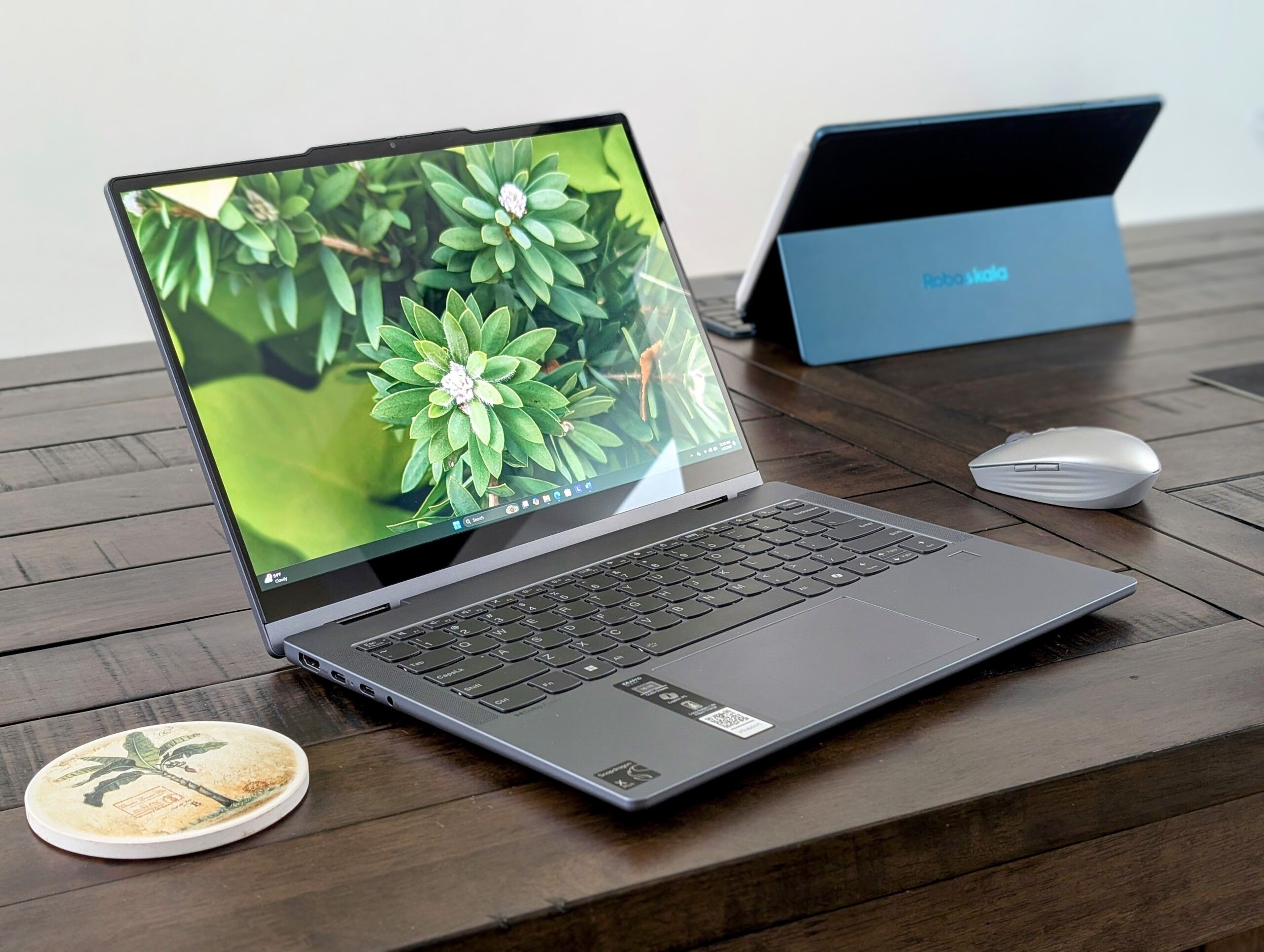







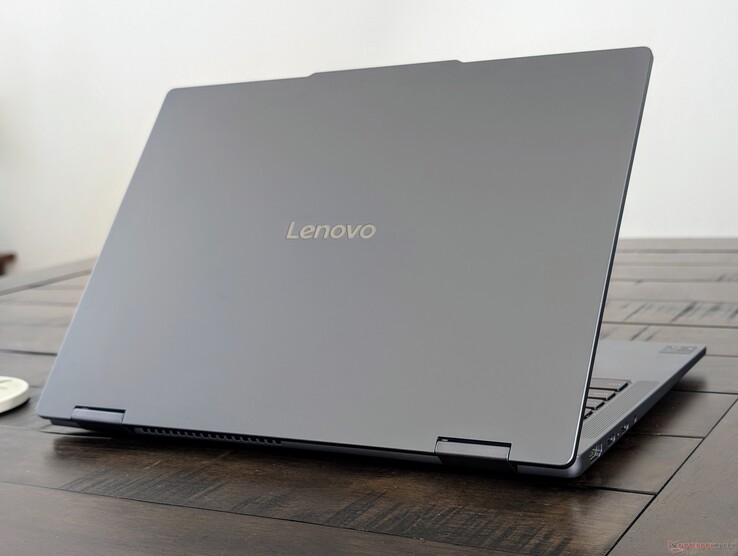
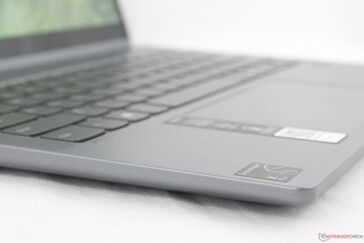
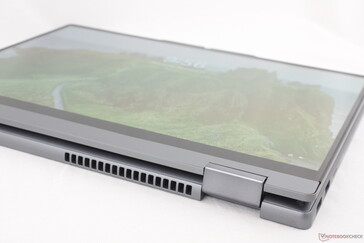

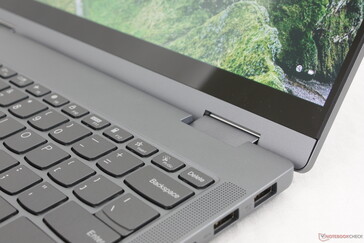
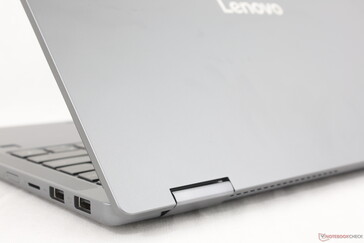






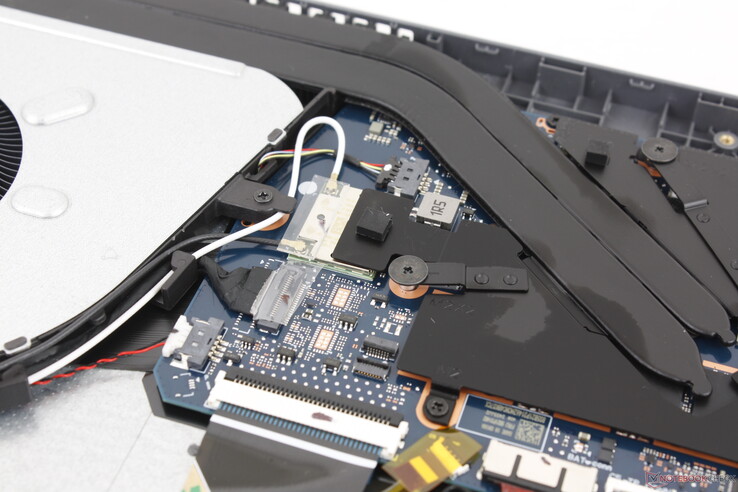
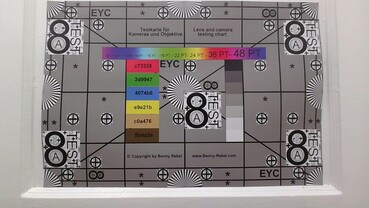

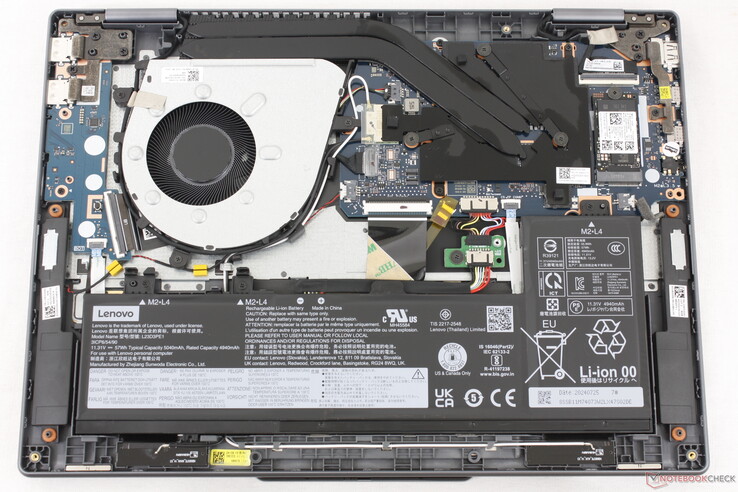
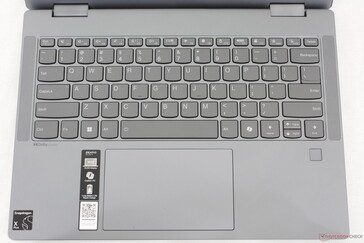


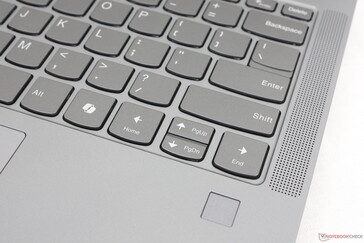

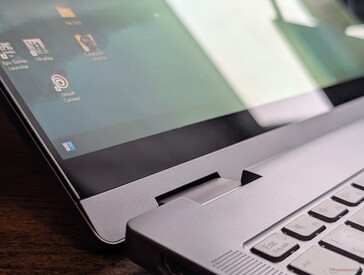

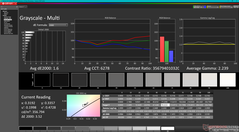
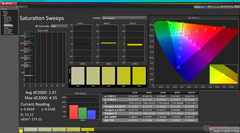
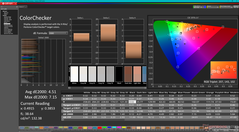
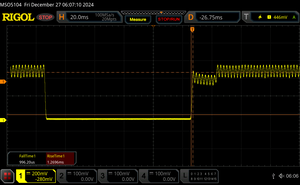
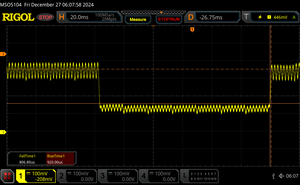
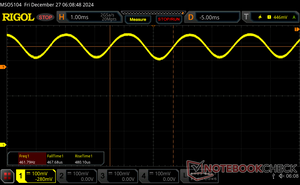









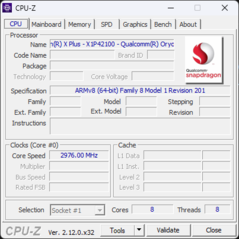
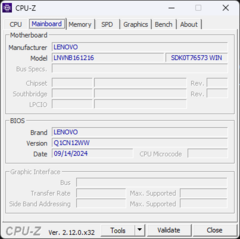
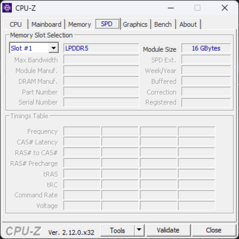
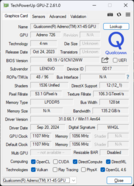

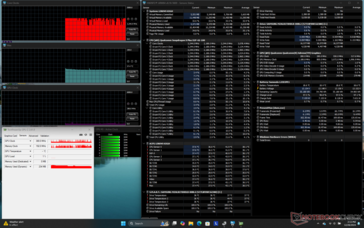
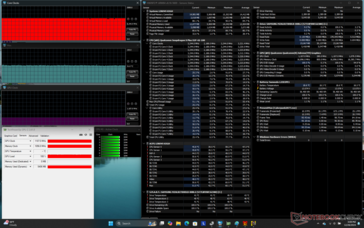
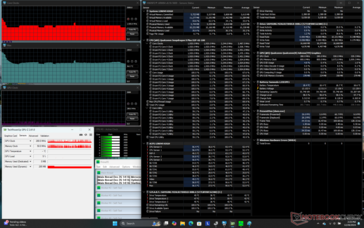
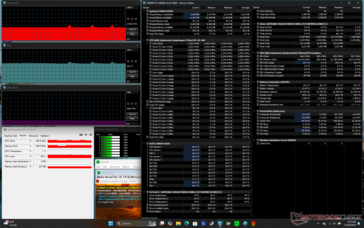
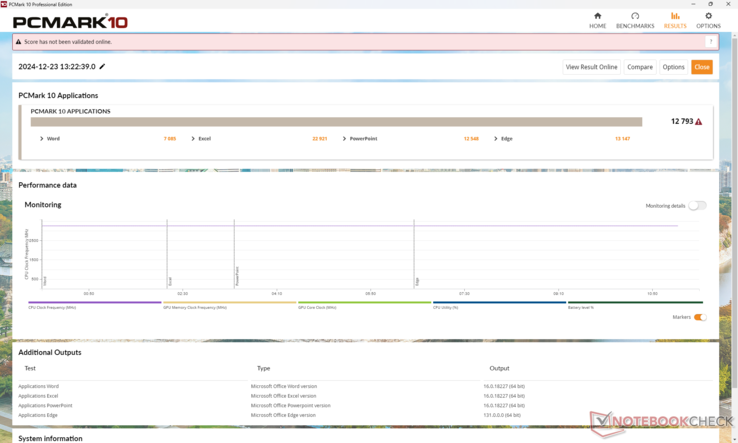
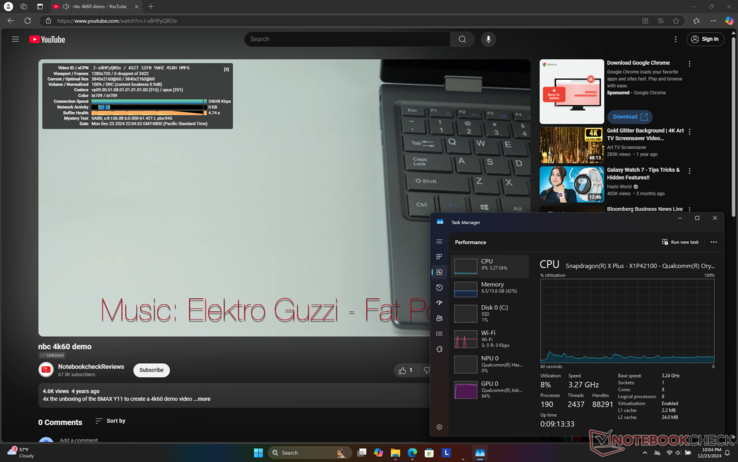
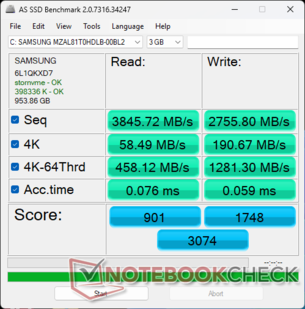
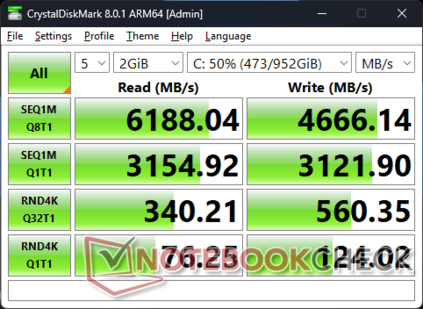
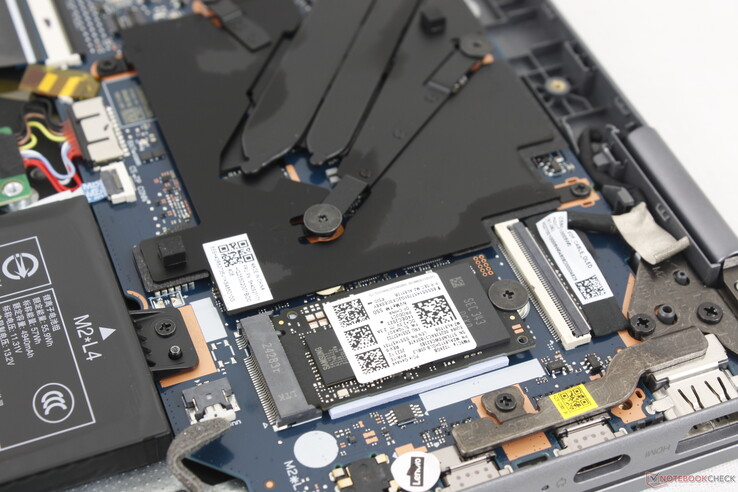

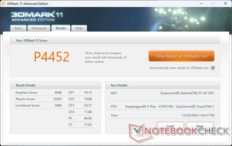
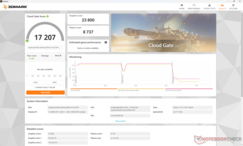
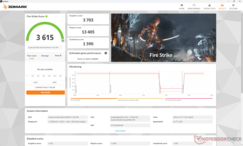

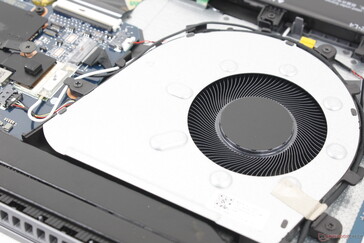
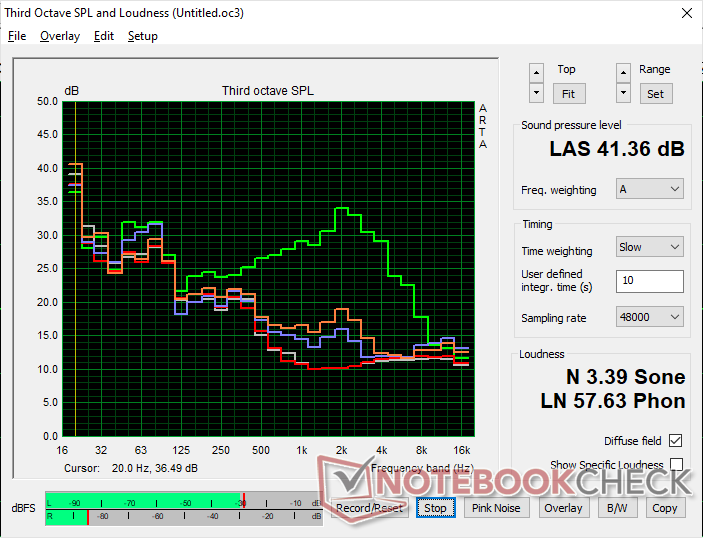
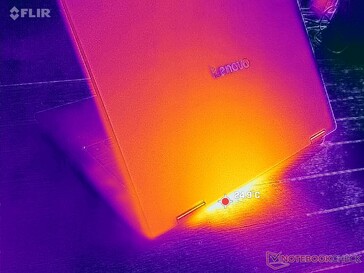
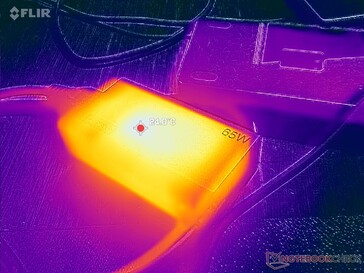
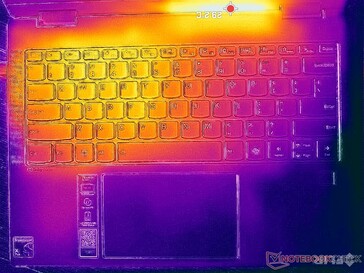
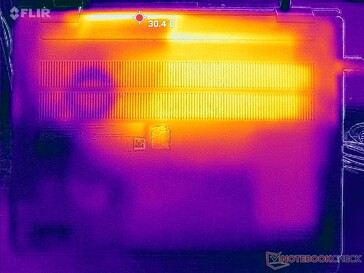
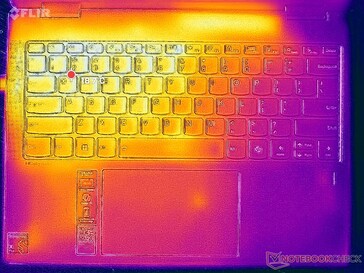
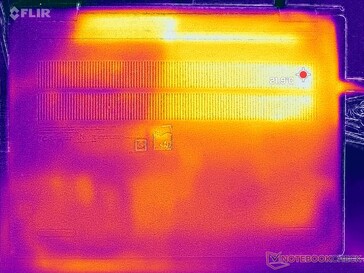
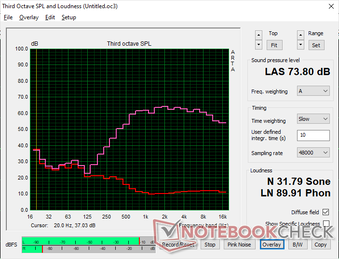

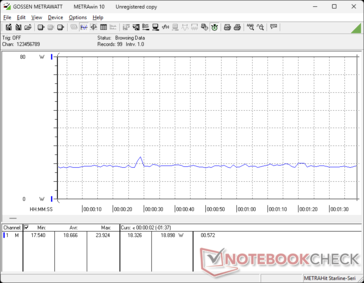
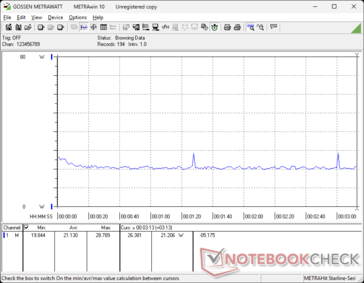
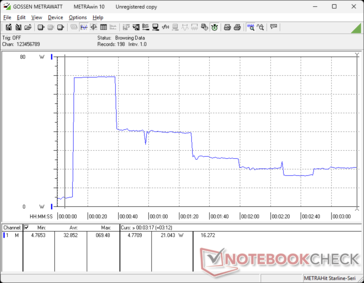
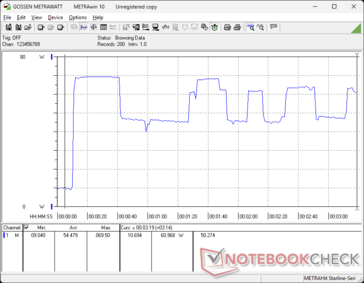
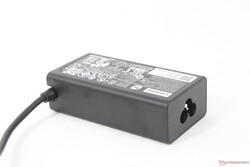
 Total Sustainability Score:
Total Sustainability Score: 
